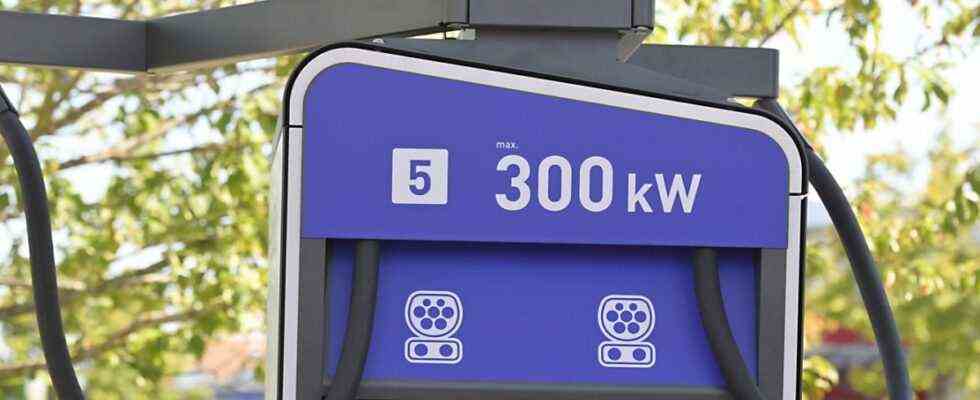It is a huge charging station that is currently being built at the Kamen motorway junction, a major traffic junction in North Rhine-Westphalia: the energy company EnBW is setting up 52 fast chargers there. Each of the sockets that are connected to the electric cars with thick cables creates up to 300 kilowatts of power – depending on how many cars are charging at the same time. Some models can reload a range of a hundred kilometers in just five minutes. It is probably the largest high-speed charging park in Europe. A showcase project that EnBW boss Frank Mastiaux could be happy about: His company is the market leader in this field with currently 650 fast-charging locations nationwide – with another one being opened almost every day. For comparison: Tesla and Ionity are currently much worse positioned with around a hundred locations each. In 2025, EnBW wants to provide fast charging facilities at 2,500 locations across Germany; up to 100 million euros will be invested annually for this purpose.
And yet the joy at Mastiaux is not unclouded. The mobility transition is comparable in importance and magnitude to the energy transition, but it is also stalling – for example in the construction of wind turbines or power lines, which the energy company has been feeling for years. “That is why we cannot repeat the same mistakes when building the charging infrastructure as we did when expanding renewables, which is slowed down by complicated bureaucratic processes.” Mastiaux will feed these concerns in detail into politics this Thursday: For this day, Prime Minister Winfried Kretschmann has once again invited to the Baden-Württemberg Automotive Industry Strategy Dialog. This includes the CEOs of Daimler and Porsche and the supplier ZF. And also EnBW, which mostly belongs to the state of Baden-Württemberg anyway, as well as various districts in the southwest.
In terms of new registrations, e-cars even overtook diesel recently
Frank Mastiaux is focusing primarily on fast charging points, which are becoming more and more “dominant” for electromobility. There is currently a ratio of one quick charging point to 70 e-cars, which means that one is “well on the way”, and one charging point to one hundred e-cars is also a reasonable figure. But the prerequisites would have to improve so that the charging infrastructure really takes place everywhere in the country and can keep up with the ever larger and faster growing e-car fleet – which now consists of around half a million vehicles; in September, electrified cars overtook diesel vehicles for the first time for new registrations.
“As in the development of electric cars, there is a lot of commitment from many providers when it comes to setting up the charging infrastructure,” said the EnBW CEO in an interview with Süddeutsche Zeitung, “However, the regulatory framework is in parts just not helpful.”
Last year, for example, around 13,000 charging points were subsidized by the state – but only 3,000 were put into operation. This is less due to inadequate technical possibilities than to the bureaucracy. “Mandatory installation of credit card terminals, for example, is simply counterproductive and backward-looking, since more modern, digital payment methods have long been available,” says Mastiaux. Even with calibration law, there is hardly any progress: How can electricity be measured in a legally secure manner at the charging station?
But also the question of what a fast charging park should do is overregulated in the opinion of EnBW. In the tender for its “Germany network”, for example, the Federal Ministry of Transport, in which more than 8,000 charging points are to be created by the end of 2023, stipulates that all connections must provide at least 200 kilowatts of continuous power at the same time – around the clock. The Kamener Kreuz location, for example, would not have been possible at all because this overall performance would only have been feasible via a new supply line – which would have almost doubled the location costs.
The subsidies are already complicated – the federal government alone has made two billion euros available to promote the development of the initially mostly unprofitable locations. But the allocation of funds takes time. Two years ago, EnBW proposed 1,000 locations as part of the “Germany Network” program. However, the first notices are not expected until the end of 2023 at the earliest. If the energy company were to wait for it instead of building completely independently, there would be next to no location before 2025.

